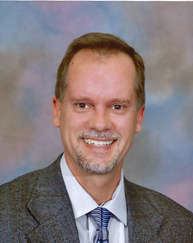
Steven L. Manly
Professor of Physics
PhD in Experimental High-Energy Physics, Columbia University, 1989
- Office Location
- 203E Bausch & Lomb Hall
- Telephone
- (585) 275-8473
- Fax
- (585) 273-3237
- Web Address
- Website
Biography
Professor Manly received his BA in chemistry, mathematics, and physics (1982) from Pfeiffer College in rural North Carolina. Looking for a change, he moved to New York City and received his PhD in experimental high-energy physics from Columbia University in 1989 (under Charles Baltay). After decade at Yale University as a postdoc and faculty member, he moved to the University of Rochester in 1998. He was named NY State Professor of the Year in 2003 by the Carnegie Foundation for the Advancement of Teaching and was the Mercer Brugler Distinguished Teaching Professor from 2002 to 2005. Manly was awarded the American Association of Physics Teachers (AAPT) Award for Excellence in Undergraduate Teaching in 2007. He shared the 2016 Breakthrough Prize in Fundamental Physics as a member of the T2K neutrino experiment.Research Overview
Professor Manly's research interests are primarily in the areas of high energy, nuclear, and gravitational physics. Currently, he is focused on neutrino physics with the MINERvA experiment at Fermi National Acceleratory Laboratory in Batavia, IL, the T2K experiment at J-PARC Laboratory (just north of Tokyo, Japan), and the Deep Underground Neutrino Experiment (DUNE) at Fermilab and the Black Hills of South Dakota. The goal of this work is to understand the details of how neutrinos interact with matter and to measure precisely the parameters governing neutrino oscillations and the extent to which neutrinos and antineutrinos differ in their behavior. The eventual hope is to shed light on the possibility that neutrinos may have played a role in creating the matter-antimatter asymmetry that arose (apparently) in the early universe. In the past, he has studied high energy neutrino interactions with the E53 collaboration at Fermilab, electroweak and B physics at the Zo resonance with the SLD collaboration at the Stanford Linear Accelerator Center, and heavy ion physics with the PHOBOS experiment at Brookhaven National Laboratory’s Relativistic Heavy Ion Collider. He’s dabbled in other things, such as examining the feasibility of high precision gravity experiments using optical fibers and evaluating time-dependent effects in long-term studies of nuclear decay rates.
For further details, go to Professor Manly's home page at:http://www.pas.rochester.edu/~manly/main/manlyhome.htm.
Research Interests
- experimental elementary-particle physics
